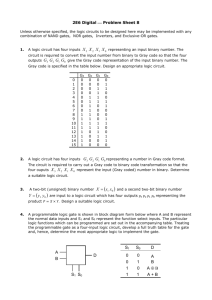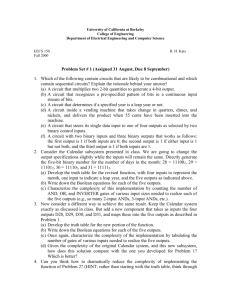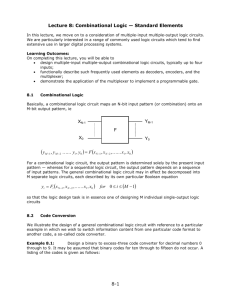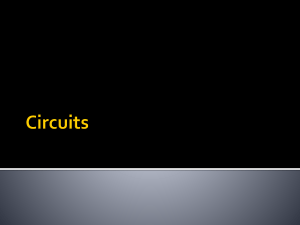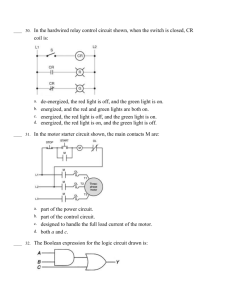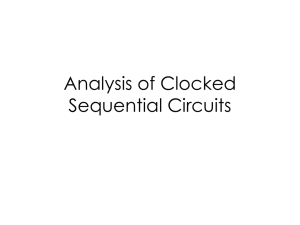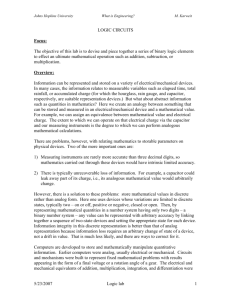2.3 Key Terms
advertisement
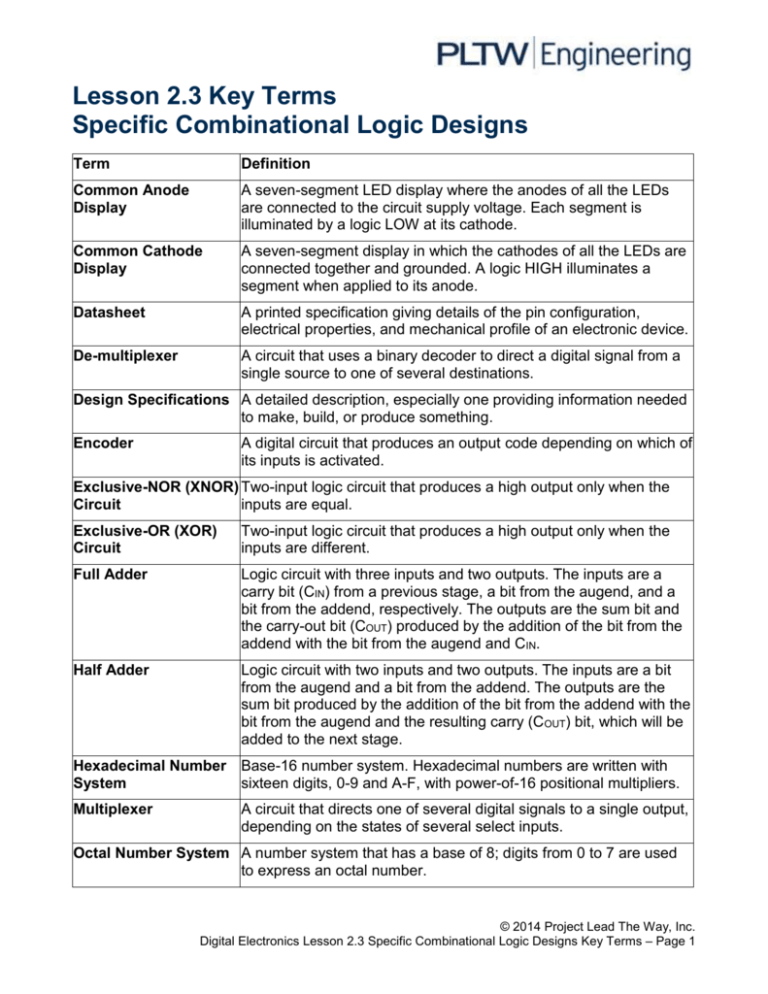
Lesson 2.3 Key Terms Specific Combinational Logic Designs Term Definition Common Anode Display A seven-segment LED display where the anodes of all the LEDs are connected to the circuit supply voltage. Each segment is illuminated by a logic LOW at its cathode. Common Cathode Display A seven-segment display in which the cathodes of all the LEDs are connected together and grounded. A logic HIGH illuminates a segment when applied to its anode. Datasheet A printed specification giving details of the pin configuration, electrical properties, and mechanical profile of an electronic device. De-multiplexer A circuit that uses a binary decoder to direct a digital signal from a single source to one of several destinations. Design Specifications A detailed description, especially one providing information needed to make, build, or produce something. Encoder A digital circuit that produces an output code depending on which of its inputs is activated. Exclusive-NOR (XNOR) Two-input logic circuit that produces a high output only when the Circuit inputs are equal. Exclusive-OR (XOR) Circuit Two-input logic circuit that produces a high output only when the inputs are different. Full Adder Logic circuit with three inputs and two outputs. The inputs are a carry bit (CIN) from a previous stage, a bit from the augend, and a bit from the addend, respectively. The outputs are the sum bit and the carry-out bit (COUT) produced by the addition of the bit from the addend with the bit from the augend and CIN. Half Adder Logic circuit with two inputs and two outputs. The inputs are a bit from the augend and a bit from the addend. The outputs are the sum bit produced by the addition of the bit from the addend with the bit from the augend and the resulting carry (COUT) bit, which will be added to the next stage. Hexadecimal Number Base-16 number system. Hexadecimal numbers are written with System sixteen digits, 0-9 and A-F, with power-of-16 positional multipliers. Multiplexer A circuit that directs one of several digital signals to a single output, depending on the states of several select inputs. Octal Number System A number system that has a base of 8; digits from 0 to 7 are used to express an octal number. © 2014 Project Lead The Way, Inc. Digital Electronics Lesson 2.3 Specific Combinational Logic Designs Key Terms – Page 1 Seven-Segment Display An array of seven independently controlled light-emitting diodes (LED) or liquid crystal display (LCD) elements, shaped like a figure8, which can be used to display decimal digits and other characters by turning on the appropriate elements. Signed Binary Number A binary number of fixed length whose sign is represented by one bit, usually the most significant bit, and whose magnitude is represented by the remaining bits. Sign Bit A binary bit that is added to the leftmost position of a binary number to indicate whether that number represents a positive or a negative quantity. 1’s Complement A form of signed binary notation in which negative numbers are created by complementing all bits of a number, including the sign bit. 2’s Complement A form of signed binary notation in which negative numbers are created by adding 1 to the 1’s complement form of the number. © 2014 Project Lead The Way, Inc. Digital Electronics Lesson 2.3 Specific Combinational Logic Designs Key Terms – Page 2

